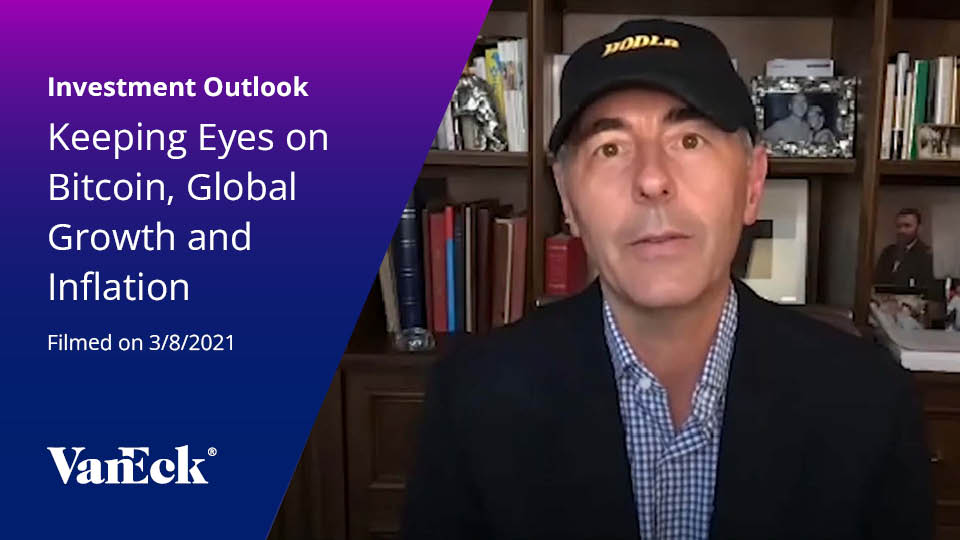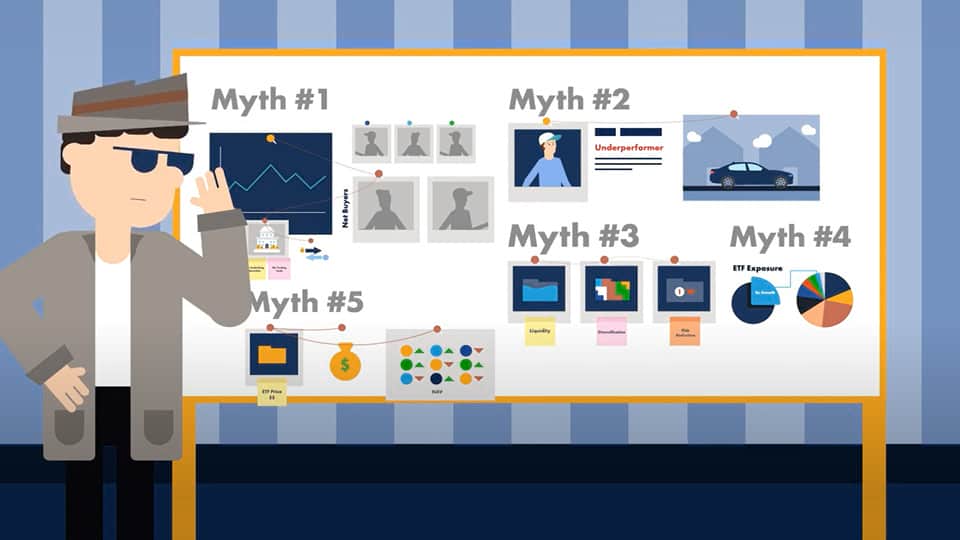ETF 105: Wrap Your Fixed Income in an ETF
19 February 2020
Watch Time 3:21 MIN
Accessing the bond market can be challenging, especially for individual investors—making fixed income ETFs an effective vehicle to achieve efficient bond exposure.
Traditionally, investors seeking exposure to bond markets had to gain access through actively managed mutual funds—which typically means higher costs and potentially less diversification
Fixed income ETFs combine the best elements of the ETF structure with the benefits of fixed income exposure, giving investors affordable and broad access to the bond market.
Fixed income ETFs have come a long way since they were launched in 2002 and investors have become much more familiar with the different benefits they provide however, there are still some misconceptions
Investors must do their due diligence and determine; what is a myth and what is reality:
1.) Myth #1: Investors do not know what they are buying
a. ETF holdings are displayed daily - providing investors with a window of intraday, real time pricing transparency.Unlike mutual funds which typically display holdings anywhere from a 30-60 day lag.
2.) Myth #2: “Promised” Liquidity
a. Due to the nature of bond trading, bonds are inherently less liquid. Although the liquidity of an ETF is driven by its underlying securities, secondary market trading of the ETF’s shares provides another layer of liquidity, enhancing the overall liquidity profile for investors. In many instances, investors exchange shares of the ETF itself, and there are no transactions in the underlying bonds.
3.) Myth #3: Liquidity will diminish in times of stress
a. There is a misunderstanding that during periods of market sell-offs, investors will face diminished liquidity and wider spreads. However, fixed income ETFs have been known to historically experience enhanced liquidity during periods of heightened volatility.
4.) Myth #4: Lack of Liquidity in “Worst Case Scenarios”
a. There is a misconception that the large premiums and discounts that fixed income ETFs can experience, are a testament to their lack of liquidity.
b. However, an ETF’s market price may actually be a better reflection of the real-time value of the underlying bond portfolio The ETF’s secondary market price may be acting as a price discovery vehicle for its underlying portfolio of bonds. ETF sponsors generally rely on a third-party provider to calculate NAV, but due to the slow and sporadic nature of bond trading, sometimes it takes a bit for the NAV to catch up.
Fixed income ETFs provide a degree of flexibility for investors that is not typical in bond markets. Low cost, transparency, and diversification have broad appeal to investors seeking a long-term growth strategy. Combine that with the additional layer of liquidity, fixed income ETFs can be a great investment vehicle for individuals and financial advisors who are looking to tap into the bond market, efficiently and effectively.
So before ruling out fixed income ETFs, ask yourself: Is this a myth or, is it reality?
To learn more, visit
Important Disclosures:
This is not an offer to buy or sell, or a solicitation of any offer to buy or sell any of the securities mentioned herein. The information presented does not involve the rendering of personalized investment, financial, legal, or tax advice. Certain statements contained herein may constitute projections, forecasts and other forward looking statements, which do not reflect actual results, are valid as of the date of this communication and subject to change without notice. Information provided by third party sources are believed to be reliable and have not been independently verified for accuracy or completeness and cannot be guaranteed. The information herein represents the opinion of the author(s), but not necessarily those of VanEck.
The "Net Asset Value" (NAV) of a VanEck Vectors Exchange Traded Fund (ETF) is determined at the close of each business day, and represents the dollar value of one share of the fund; it is calculated by taking the total assets of the fund, subtracting total liabilities, and dividing by the total number of shares outstanding. The NAV is not necessarily the same as the ETF's intraday trading value. VanEck Vectors ETF investors should not expect to buy or sell shares at NAV.
ETF Fund shares are not individually redeemable and will be issued and redeemed at their net asset value (NAV) only through certain authorized broker-dealers in large, specified blocks of shares called "creation units" and otherwise can be bought and sold only through exchange trading. Shares may trade at a premium or discount to their NAV in the secondary market. You will incur brokerage expenses when trading Fund shares in the secondary market.
All investing is subject to risk, including the possible loss of the money you invest. As with any investment strategy, there is no guarantee that investment objectives will be met and investors may lose money. Diversification does not ensure a profit or protect against a loss in a declining market
Related Insights
IMPORTANT DEFINITIONS & DISCLOSURES
This material may only be used outside of the United States.
This is not an offer to buy or sell, or a recommendation of any offer to buy or sell any of the securities mentioned herein. Fund holdings will vary. For a complete list of holdings in VanEck Mutual Funds and VanEck ETFs, please visit our website at www.vaneck.com.
The information presented does not involve the rendering of personalized investment, financial, legal, or tax advice. Certain statements contained herein may constitute projections, forecasts and other forward looking statements, which do not reflect actual results. Information provided by third-party sources are believed to be reliable and have not been independently verified for accuracy or completeness and cannot be guaranteed. Any opinions, projections, forecasts, and forward-looking statements presented herein are valid as of the date of this communication and are subject to change without notice. The information herein represents the opinion of the author(s), but not necessarily those of VanEck.
The views contained herein are not to be taken as advice or a recommendation to buy or sell any investment in any jurisdiction, nor is it a commitment from Van Eck Associates Corporation or its subsidiaries to participate in any transactions in any companies mentioned herein. This content is published in the United States. Investors are subject to securities and tax regulations within their applicable jurisdictions that are not addressed herein.
All investing is subject to risk, including the possible loss of the money you invest. As with any investment strategy, there is no guarantee that investment objectives will be met and investors may lose money. Diversification does not ensure a profit or protect against a loss in a declining market. Past performance is no guarantee of future results.








